Fujifilm XF 80mm f2.8 R LM OIS WR Macro Lens Review:
In just a short amount of time, Fujifilm have gone to great efforts to create a lens collection for the X Series system that is not only versatile but complete in an attempt to satisfy a vast majority of photographers. They have lenses in the ultra wide range all the way up to longer telephotos. But one area where one could argue needs a little improvement is lenses concerning macro photography. They do have the XF 60mm f2.4, which is one of the first XF lenses to be introduced, and extension tubes but I’m sure most of us can agree: we need more macro choices from Fuji :)! So, Fujifilm heard us, of course, and recently released the new XF 80mm f2.8 R LM OIS WR Macro lens. Let’s take a closer look.
Fujifilm XF 80mm f2.8 R LM OIS WR Macro Lens Build Quality:
So, let’s take a look at the build quality first. Boy, Fujifilm have come a long way since the days of the first generation lenses :). In my opinion, the XF 80mm f2.8 R LM OIS WR Macro lens is one of the better built lenses in the X Series system. Thanks in part to the metal construction, the lens is very solid feeling, and matches its asking price of $1,199. The aperture ring click solidly in third stops, and it offers just the right amount of resistance for a nice tactile feel. I didn’t have any issues with it being accidentally moved either. There’s also five stop image stabilization, which you can turn on and off. The image stabilization is a huge plus in this lens if you ask me. You can also limit the focus range via a switch next to close focus only (0.25 – 0.5 m), distance focus (0.5 – infinity) or full range.
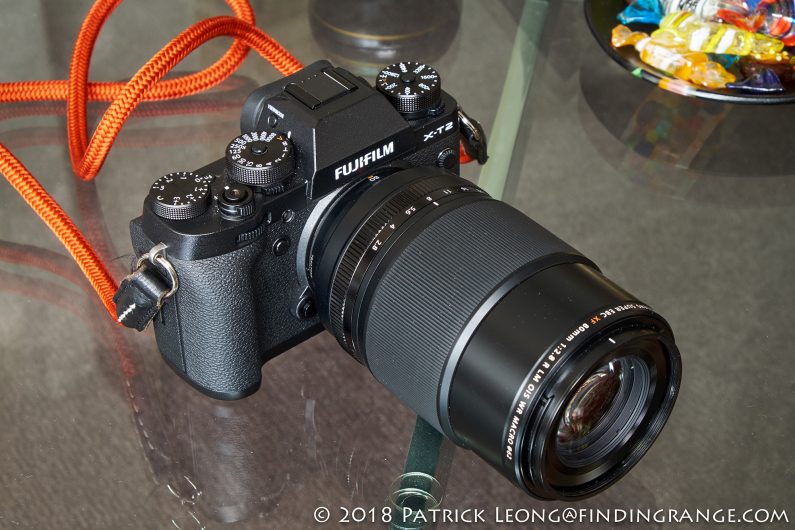
↑ The Fuji X-T2 with the XF 80mm f2.8 Macro.
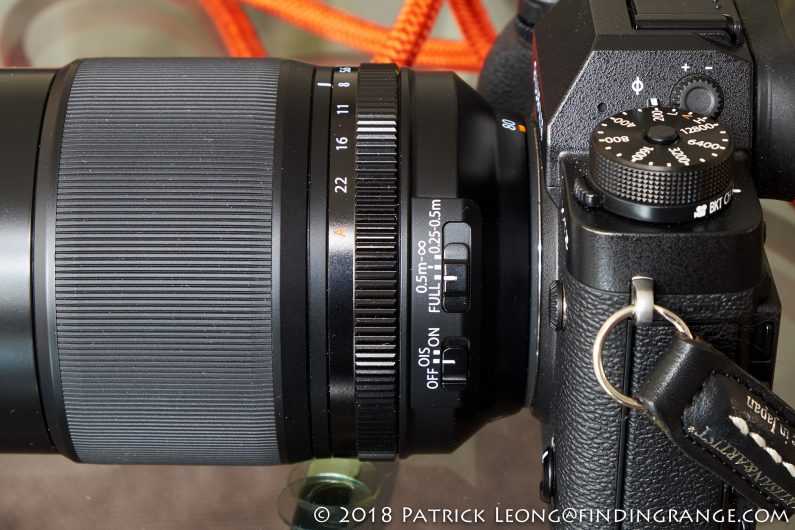
↑ There are switches on the side of the lens for the image stabilization system, and for limiting focus.
To top it all off, the XF 80mm f2.8 is built to handle all types of weather. I think this characteristic is particularly important being that the XF 80mm f2.8 is a macro lens. I’m not a macro photographer but I imagine that some will want to go out into nature, and shoot various bugs and foliage, and as we know, nature doesn’t always cooperate when it comes to weather :). The XF 80mm f2.8 R LM OIS WR Macro lens is not only sealed against weather and dust, it’s capable of working in temperatures as low as -10°C. The front element is also coated with fluorine to help it repel dirt and water.
So overall, I’m quite happy with the build quality of this lens. It really is up there with some of the best that Fuji have to offer but there are a few issues I’d like to discuss. First off, yes, the XF 80mm f2.8 Macro is a well-made lens but there is a slight rattle internally when the lens is not powered. I don’t know if I would even call it a rattle; it just sounds like something is loose inside. I know this doesn’t sound great but here me out: this is actually normal, and we’ve seen this in another Fuji lens before. It’s just the focus floating elements, and again, once the lens is powered, this issue goes away. Still, it may be unsettling for some at first.
Another issue is the overall weight. The lens weighs 750 g or in other words, about 1.7 lbs. Look, the XF 80mm f2.8 R LM OIS WR Macro lens is built well, it’s metal, and it has nice glass. It’s going to be heavy, and I’m fine with a heavy lens sometimes because for me at least, the extra weight does helps in steadying the camera a bit while shooting. But the XF 80mm f2.8 feels a little out of balance to me when mounted on Fuji bodies because the cameras are compact and light. I used the XF 80mm with my X-T2 while it was here, and even with the larger grip vs. say the X-Pro or X-E series, for example, the camera still feels noticeably front heavy. I have to say, the VPB-XT2 Vertical Power Booster Grip does help in this area though.
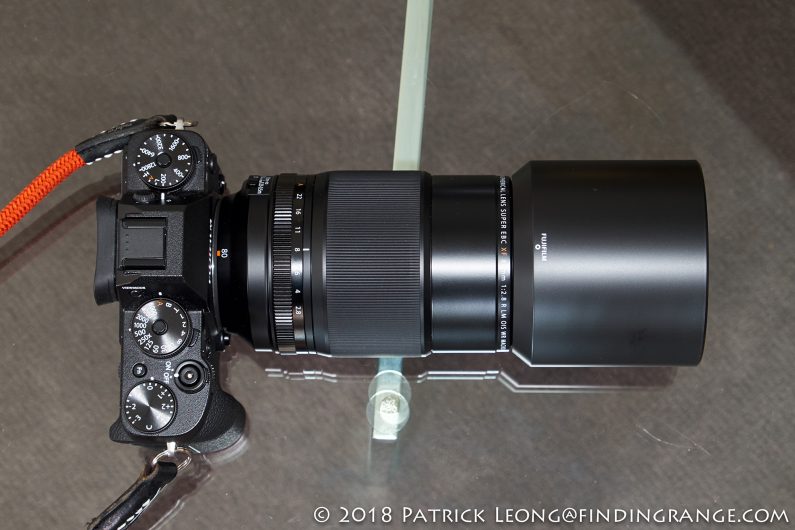
↑ The XF 80mm f2.8 Macro is a pretty large lens for the X Series system.
I have absolutely no issues with Fuji making more large lenses in the future, especially if the optics are good but I would like bodies that are maybe a little heavier just for balance sake. That’s just me, of course, and others may have different opinions. Personally, I just don’t like large lenses on a small body. I say this though because I also own a Leica SL system, and while the lenses are heavy, they do feel nicely balanced when mounted on the SL. But like everything, you really do get used to it with time. As I mentioned earlier, this lens does have image stabilization, which I found indispensable at times given this type of lens.
Lastly, XF 80mm f2.8 R LM OIS WR Macro lens is big when you mount it on a Fuji body, which again, is compact. It’s something one will get used to but I’m letting those who are maybe more accustomed to just using the smaller XF lenses know, it’s definitely going to feel a bit different. The lens hood makes it even longer, so honestly, I didn’t use the hood much. In general, I used to be a die hard lens hood user but these days, not so much.
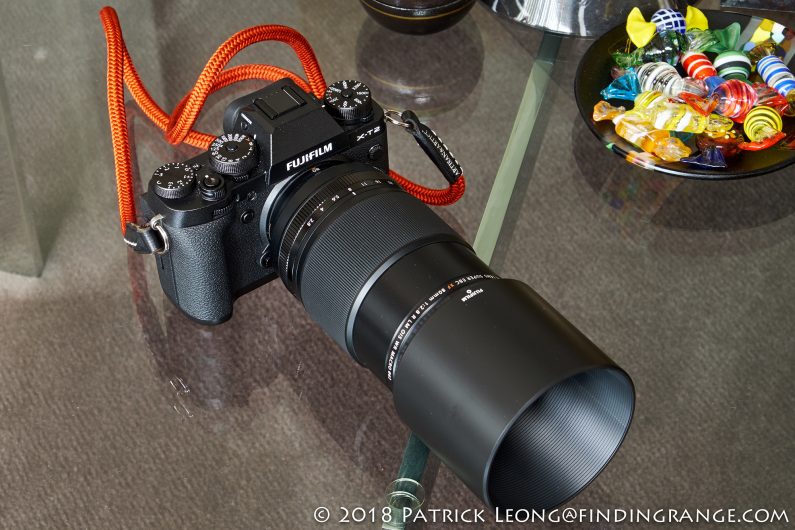
↑ The Lens hood makes the XF 80mm f2.8 even longer.
Fujifilm XF 80mm f2.8 R LM OIS WR Macro Lens Autofocus:
As for the autofocus, the linear motor makes focusing an absolute breeze. It is both silent and very quick. I was shooting portraits with the XF 80mm f2.8 R LM OIS WR Macro lens, and I had no issues locking on quickly and accurately. Many times, it feels almost instantaneous. It’s actually pretty good at capturing fast moving subjects as well. Once you shoot closer like when you want to do some macro photography, focusing can slow down sometimes, and there are moments where it could hunt a little but it’s nothing out of the ordinary for a macro lens. Since this is a review, I’m nitpicking; the autofocus is still very quick in the close up range. Bottom line is I’m very happy with the focusing capabilities of this lens.
Fujifilm XF 80mm f2.8 R LM OIS WR Macro Lens Image Quality:
Now, if you’re looking for a lens that will score a lot of points in the image quality department, look no further. I have to admit: I wasn’t too excited about testing this lens when I first heard it being announced. As I mentioned earlier, I don’t really shoot any macro, and even though macro lenses can be used for other types of photography, I guess I had that mentality in my head that it was just another macro lens. However, I finally got around to testing the XF 80mm f2.8 R LM OIS WR Macro lens, and once I saw the image quality, let’s just say I was definitely excited to use it more :). Yes, the XF 80mm f2.8 is long, and it is heavy, which together, makes it a little more inconvenient to use at times but if you ask me, it’s all worth it because this lens truly produces some superb images.
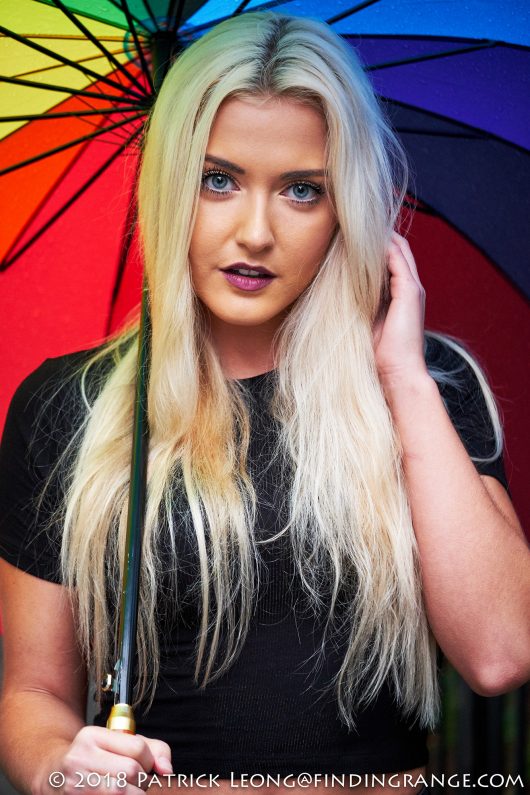
↑ The settings for this photo are 1/250 f2.8 at 2000 ISO.
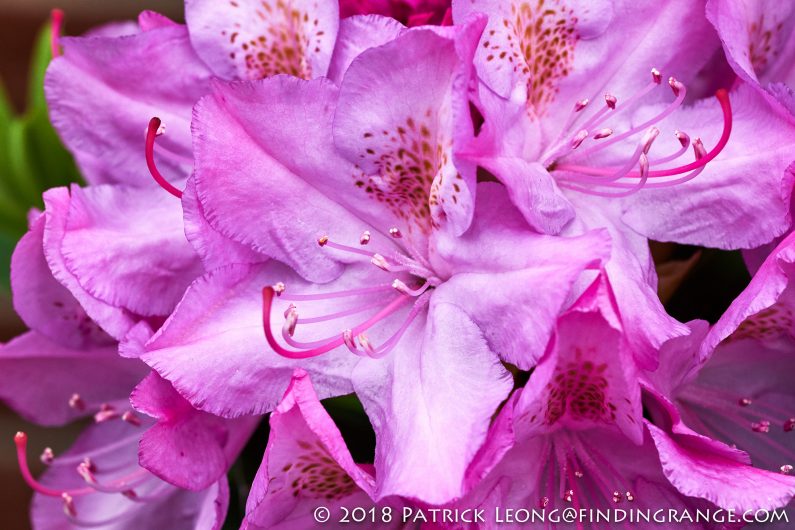
↑ The depth of field can be very thin up close, so I shot this at f10 1/250 at 1250 ISO.
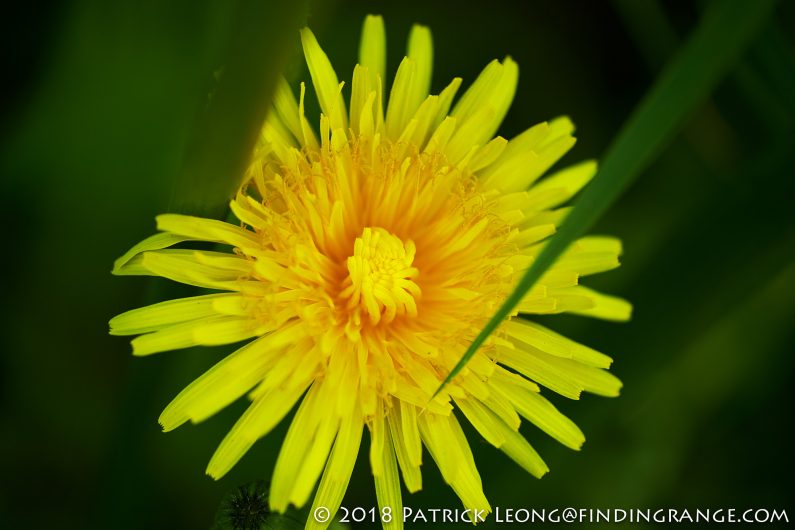
↑ This was taken at f2.8.
First off, the XF 80mm f2.8 Macro is very sharp. In fact, this is probably one of the sharpest lenses to come from Fujifilm so far. The XF 80mm f2.8 is pretty evenly sharp throughout the photo even at f2.8, and stopping down, only makes it that much better. This is the type of lens that you can definitely use throughout the aperture range with no issues at all.
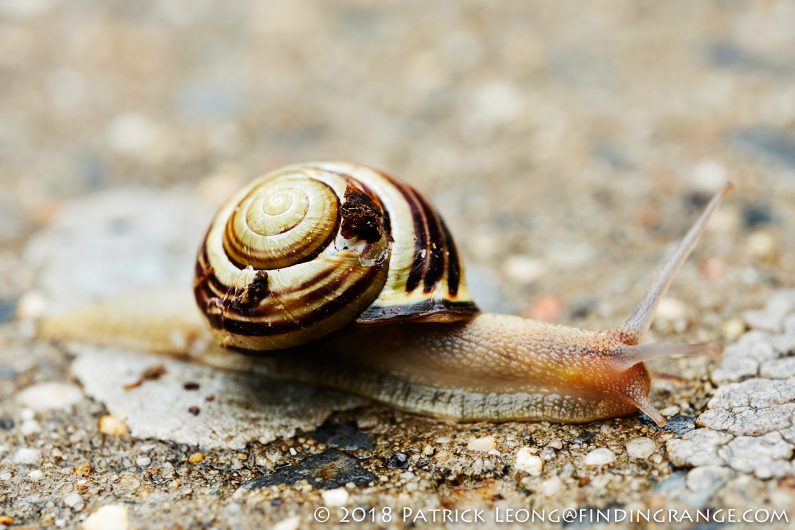
↑ It’s been raining a lot in NYC these past few weeks (why most of my pics in this review are taken in cloudy weather), and so we have creatures like this snail coming out. First time I’ve seen one on a Brooklyn street :). This was taken at f5.6. I was shooting at 640 ISO at 1/250.
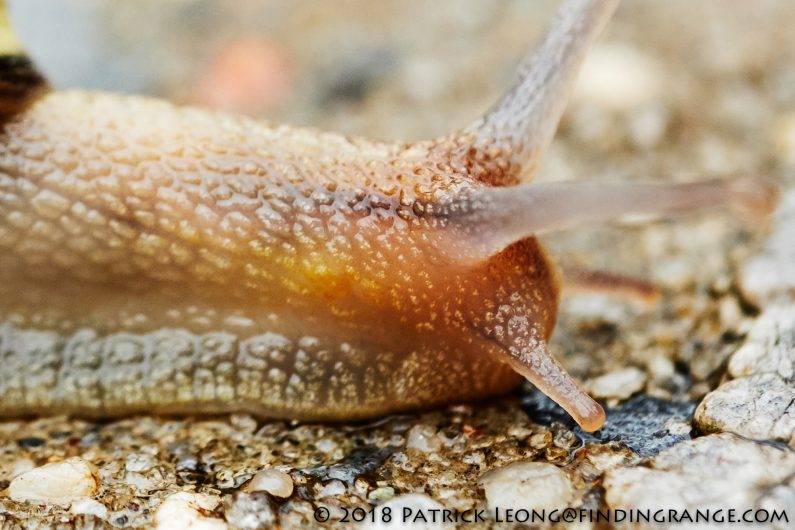
↑ Here’s a 100% crop of the photo above. As you can see, this lens is quite sharp.

↑ I was stuck in doors one day, and shot a pic of my cactus type plant. The settings are f8 1/250 at 1250 ISO.
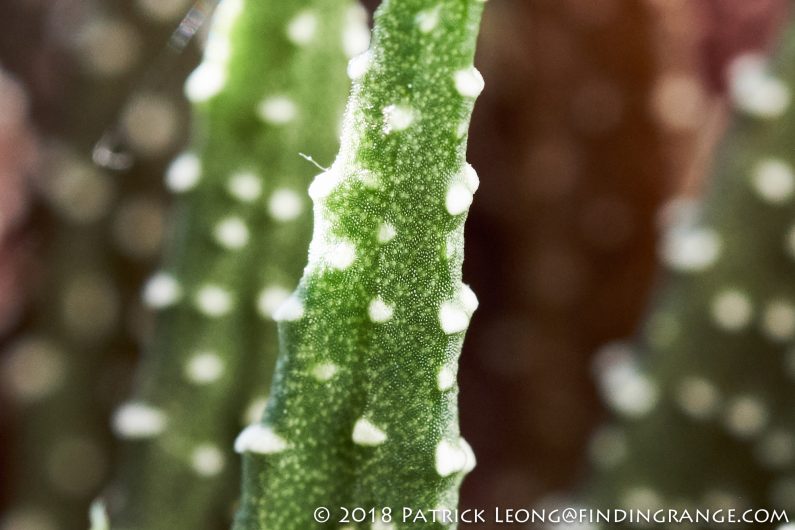
↑ Here’s a 100% crop of the photo above. Check out the little details this lens is able to retrieve.
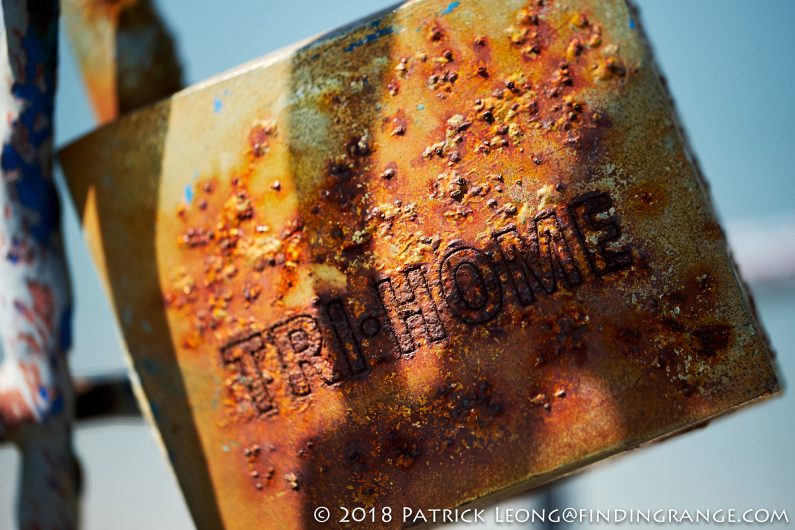
↑ Here’s a pic of a lock taken at f2.8.
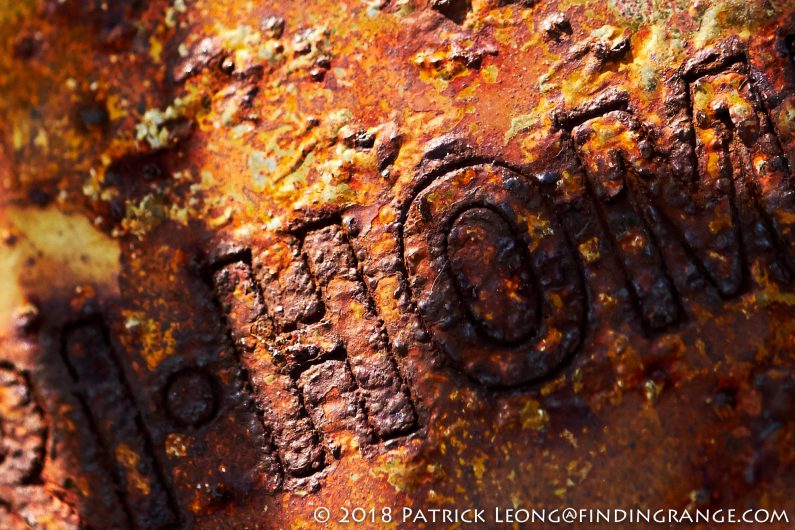
↑ Here’s a 100% crop of the photo above.
Contrast is also excellent, color rendering is typical Fuji, which is great, distortion isn’t an issue, and I haven’t had any problems with flare whatsoever. Like I said earlier, I didn’t use the lens hood that often, and as you can see in my photos, I didn’t have any problems. I’m sure if you deliberately try to get flare, you might get something but for normal shooting conditions, I had absolutely no issues. As for vignetting, there is some at f2.8, and by f4, a lot of it is gone. By f5.6, nearly all the vignetting is gone.
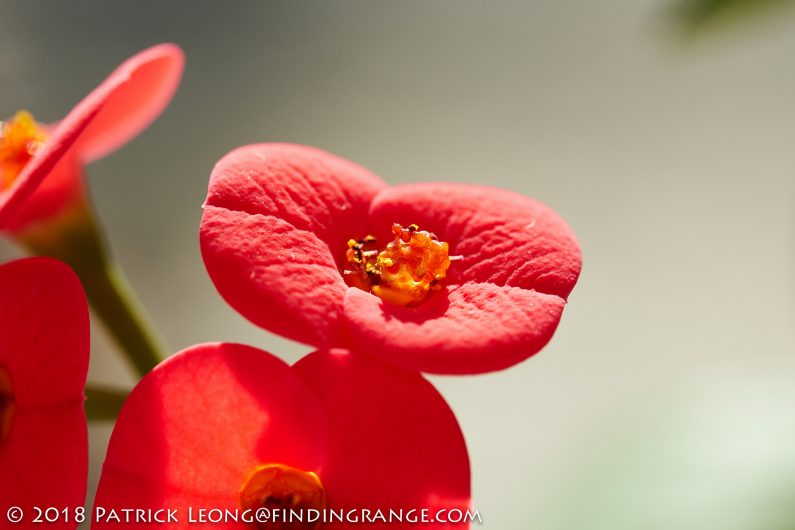
↑ The settings for this photo are f8 1/250 at 320 ISO.
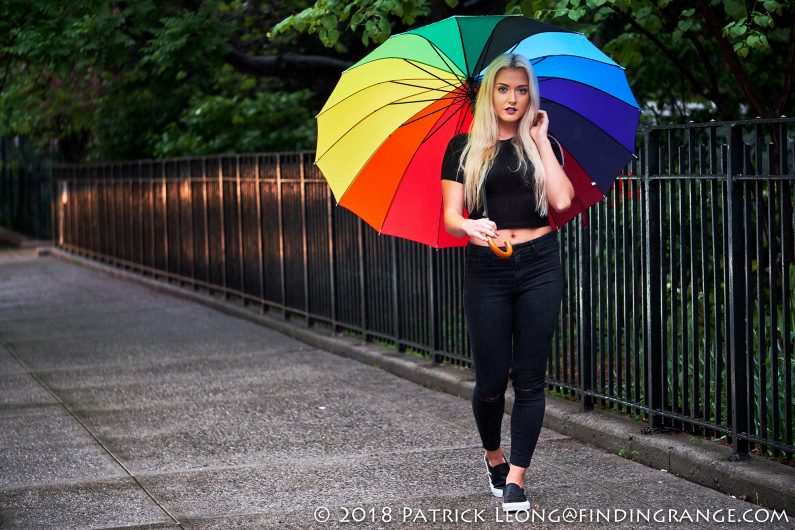
↑ I definitely got to try this lens out in the rain. In fact, it was raining quite hard on the day this photo was taken. I had no problems with the lens whatsoever. The settings for this photo are f2.8 1/250 at 2000 ISO.
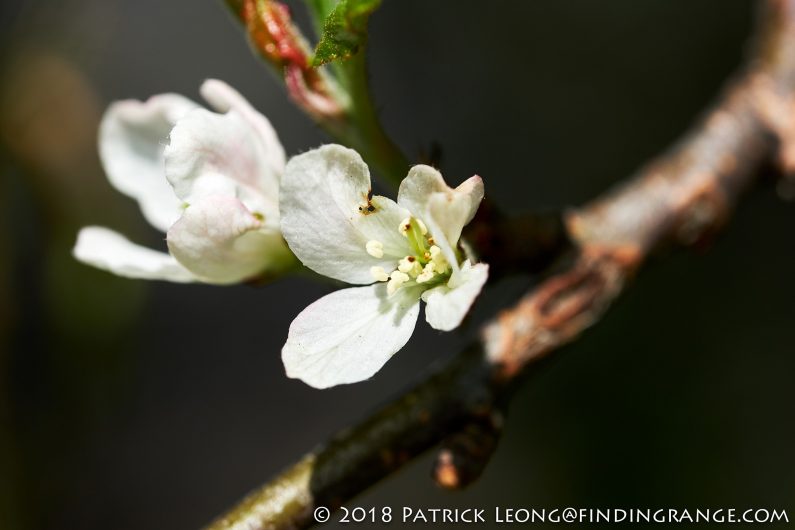
↑ Even at f5.6, the depth of field can be quite thin when shooting macro.
With the right kind of photo, you can also achieve some truly beautiful and smooth bokeh with the XF 80mm f2.8 R LM OIS WR Macro lens. When it comes to bokeh, I still prefer what comes out of my XF 56mm f1.2 APD, and the XF 90mm f2 but with that said, I would be totally happy if I only had this one lens. When I was looking through all my photos, there were times when I had to stop, and just a take second look because I was amazed at the quality of the bokeh. I know everyone has their own taste when it comes to bokeh but I can’t see anyone complaining about what comes out of this lens.

↑ The bokeh from the XF 80mm f2.8 Macro is very smooth. Here’s a shot taken at f2.8.
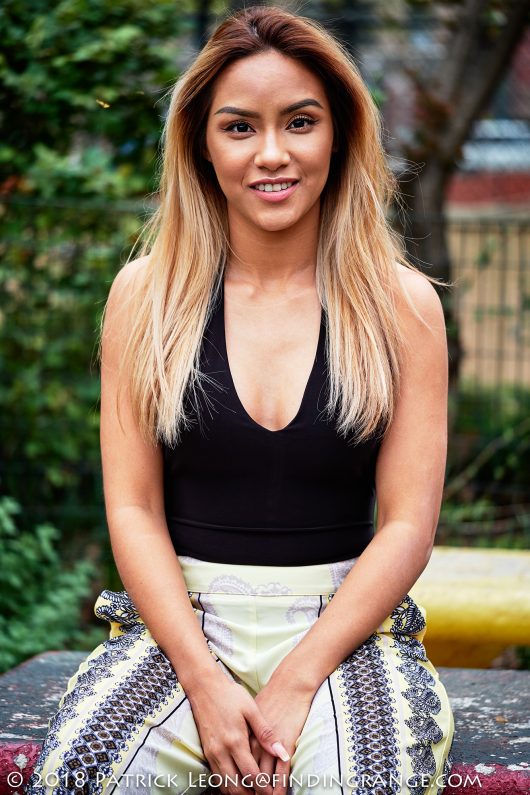
↑ Here’s another photo taken at f2.8.
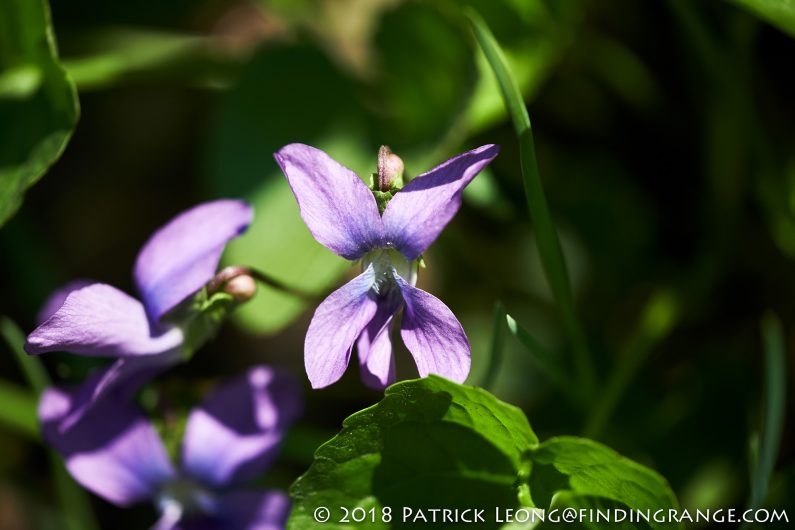
↑ Here’s one more taken at f2.8.
The truth is, there really isn’t much to say in the image quality department because the optics are just that good with no real suprises (at least in the negative way) but what I really find particularly great about this lens is its versatility. I don’t shoot macro, so if I had to choose between this lens and say the XF 90mm f2 R LM WR lens, I’d go for the latter because it is more gauged for what I like to shoot. I shoot portraits, and I still prefer the images that come out of the XF 90mm f2. I just always liked the XF 90mm, so that’s my own personal choice.
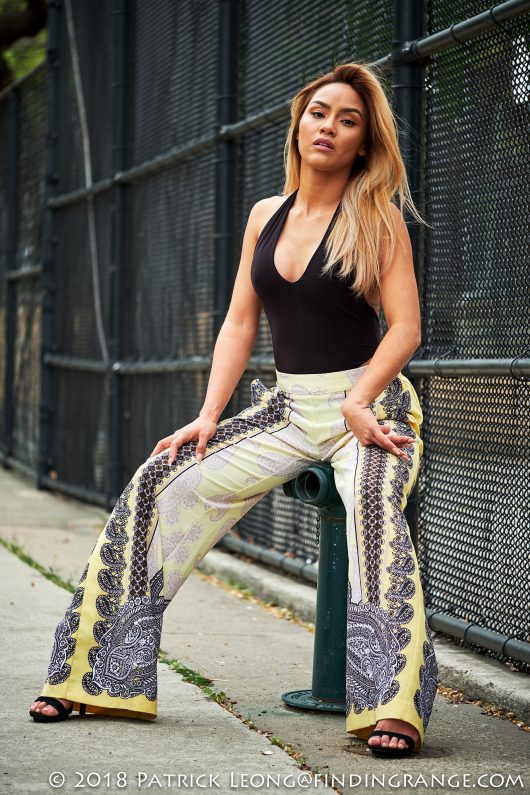
↑ Yes, the XF 80mm f2.8 Macro is a great macro lens but it is very versatile with the ability to shoot a variety of subjects and fields of photography. This was taken at f2.8.
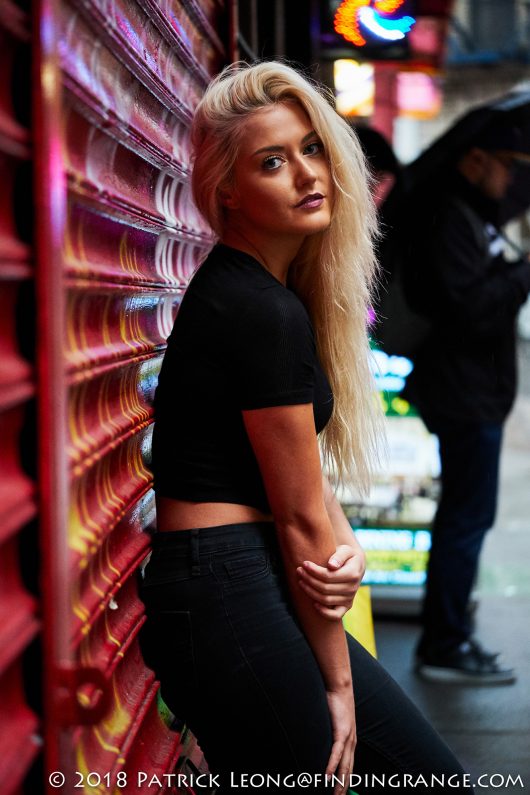
↑ Here’s one of my favorite photos from the XF 80mm f2.8 Macro. The settings are f2.8 1/250 at 5000 ISO.
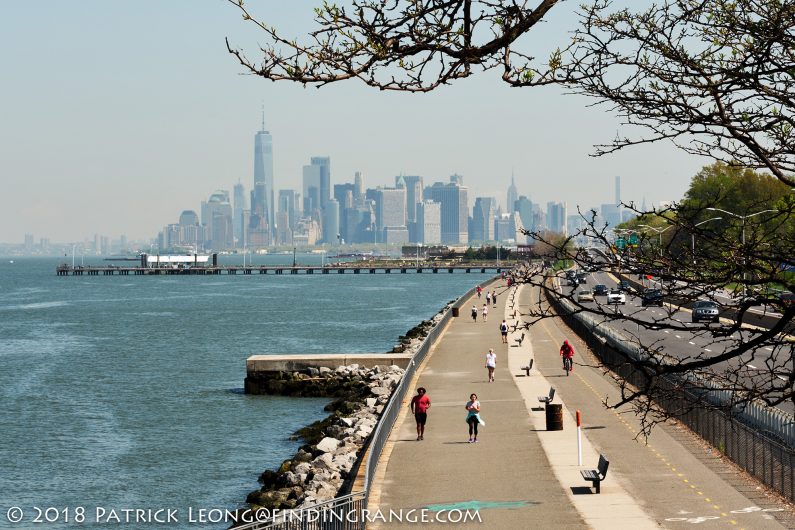
↑ In addition to portraiture and fashion, this lens is great for cityscape or landscape. This was taken at f16.
With that said, the XF 80mm f2.8 R LM OIS WR Macro lens is just more versatile. It’s only one stop slower, and it has image stabilization. Even though the XF 80mm f2.8 is technically a macro lens with the ability to capture images at 1:1 magnification, it still feels completely at home when shooting cityscape, portraits or even fashion. With this kind of flexibility, I honestly can see a lot of people choosing this lens over the XF 90mm f2 or even trading in their XF 90mm for it. Price wise, it’s just a little bit more but it may be worth it for those who are willing to sacrifice a little more speed, and telephoto range for a lens that is arguably more versatile.
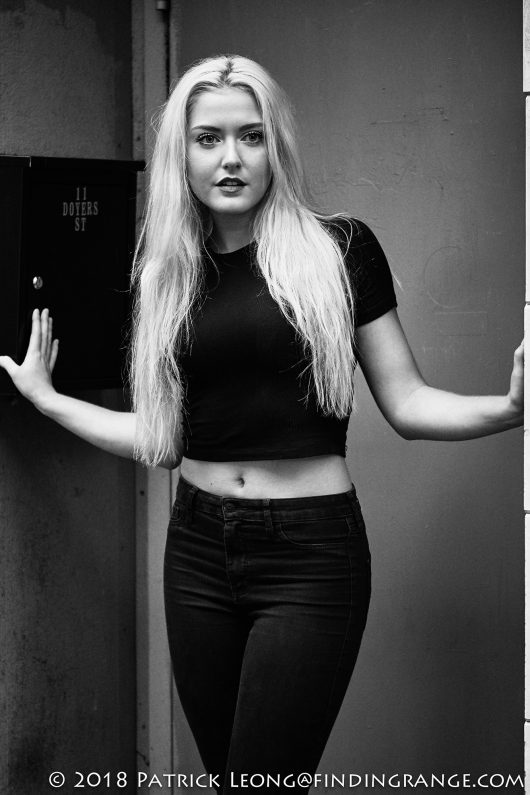
↑ The settings in this photo are f2.8 1/250 at 3200 ISO.
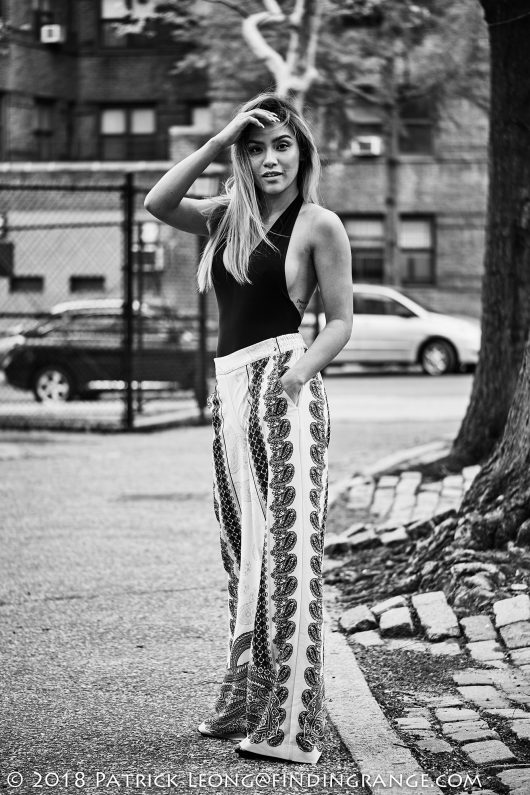
↑ Here’s another photo taken at f2.8. All black and white photos have been done in Capture One.
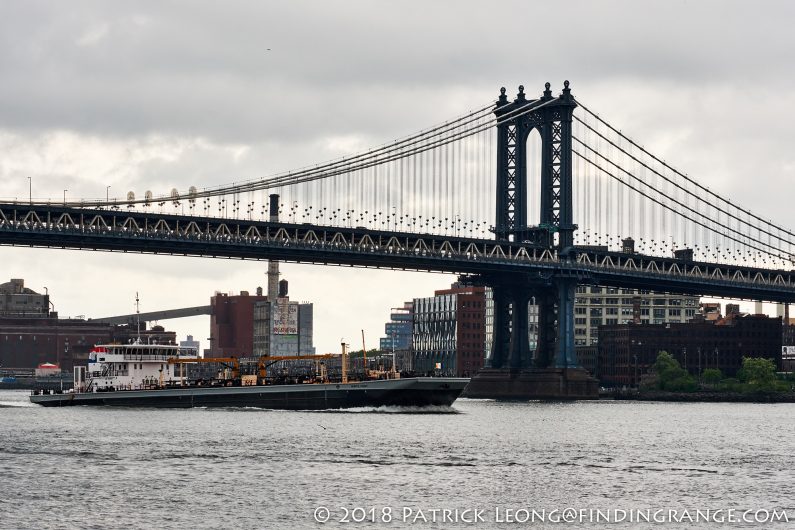
↑ I hope next month will be a little more sunny :). The settings in this photo are f16 1/250 at 500 ISO.
Fujifilm XF 80mm f2.8 R LM OIS WR Macro Lens Pros And Cons:
Fujifilm XF 80mm f2.8 R LM OIS WR Macro Lens Pros:
- Solid construction.
- Weather and dust sealed.
- Ultra fast autofocus.
- Fantastic image quality.
- Very sharp lens.
- Great bokeh.
- 1:1 macro capability.
- Versatile lens: Excellent macro lens that is also capable of shooting a variety of subjects.
Fujifilm XF 80mm f2.8 R LM OIS WR Macro Lens Cons:
- There’s a rattle in the lens that may be a little disconcerting to some at first.
- The lens is heavy and large, especially on a Fuji body.
Fujifilm XF 80mm f2.8 R LM OIS WR Macro Lens Verdict:
Overall, the XF 80mm f2.8 R LM OIS WR Macro Lens is another exceptional piece of glass to come from Fujifilm. It’s large and heavy, especially when you consider the size and weight of some of the Fuji bodies but I’m the type that is willing to deal with a little inconvenience when it can deliver the goods, and believe me, this lens can deliver. In my opinion, this is the macro lens a lot of Fuji users have been waiting for because as a macro lens, it delivers both in performance and in terms of optics.
But what makes the XF 80mm exceptional is that given it’s focal length, excellent optics, construction, and overall speed, the XF 80mm f2.8 is also great to use for other types of photography other than just macro work. At $1,199, the XF 80mm f2.8 Macro is one of the more expensive lenses in the X Series collection but in my opinion, it’s worth it. Plus, I’m a firm believer in investing in decent glass; they definitely don’t get replaced as often as camera bodies, and well, good glass can make for some great images. So, for anyone looking for a telephoto prime for the Fuji system, this might just be the one for you.
Thanks for taking the time to read my review! If you’re considering purchasing the XF 80mm f2.8 Macro, and my review helped you decide, please help support this site by purchasing from any of the links in this review. It will not cost you anything extra. Thank you for your support!

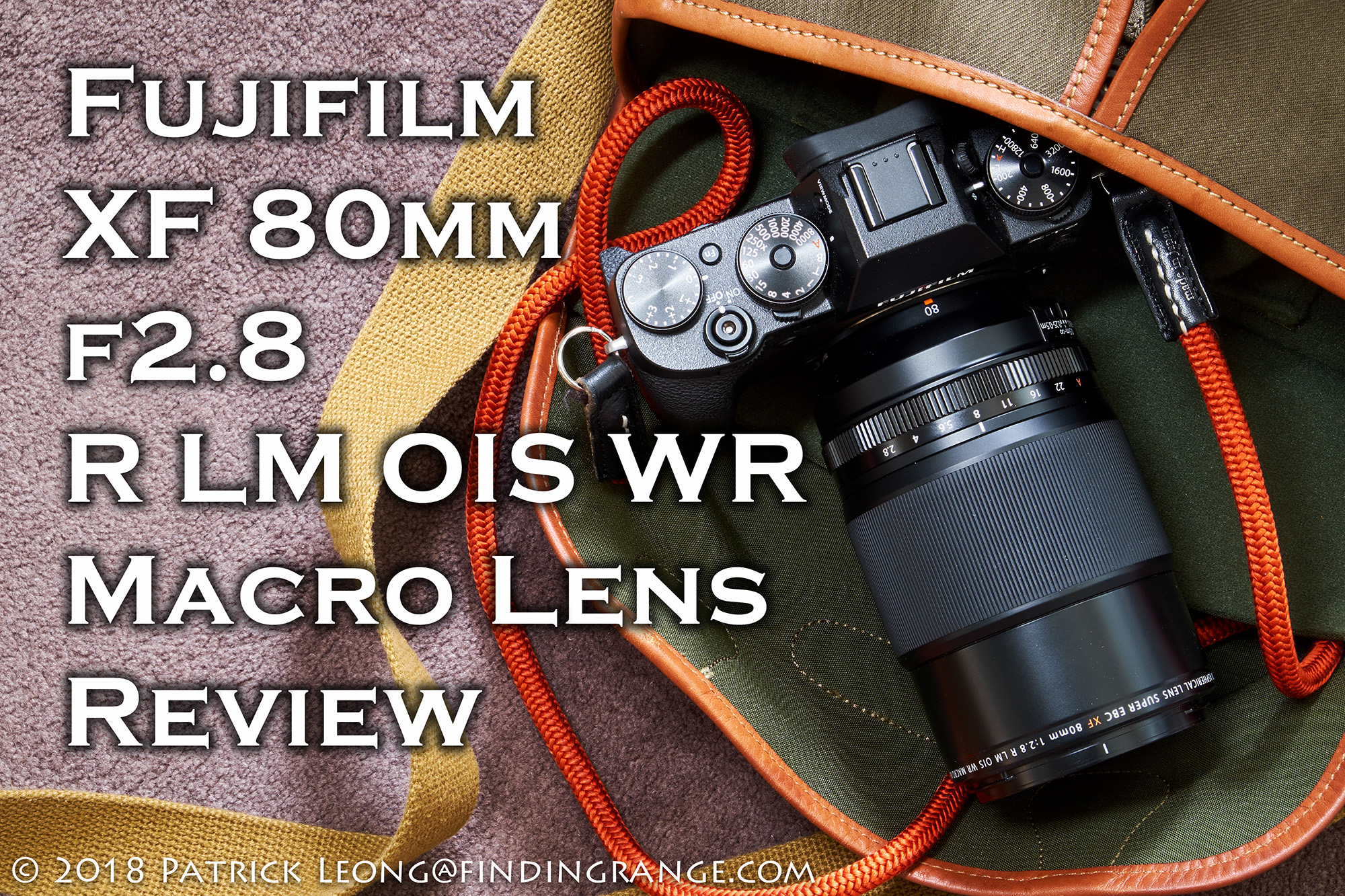
How would you compare it to the 60 mm macro?
Hi David,
It’s been a while since I used the 60mm macro but from what I remember, it’s a definitely a good lens. It’s very sharp, and it’s compact. It does not have image stabilization but it doesn’t really need it. However, I prefer the XF 80mm.
The XF 80mm is one of Fuji’s best optically, it’s considerably better built, the autofocus is a lot quicker, and of course, you do have image stabilization. The size and weight are pretty much the only issues if you compare this lens to the XF 60mm but I feel the benefits of the XF 80mm far outweigh the negatives. Plus, it makes a great alternative to the XF 90mm, so in a way, it’s kind of like having a great macro, and a good portrait lens all in one :). I hope this helps!
Best,
Patrick